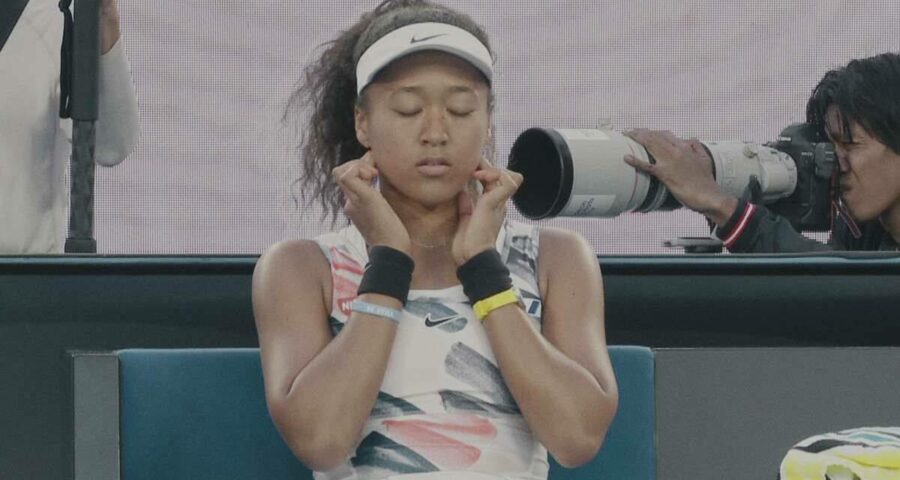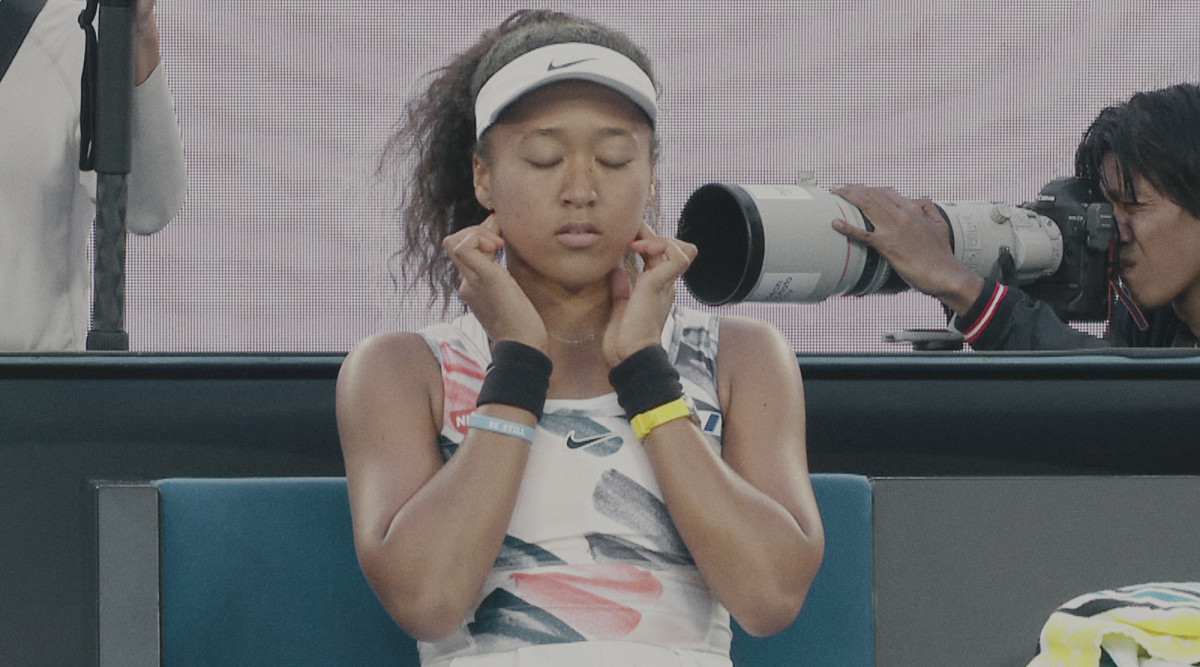Sports celebrates the indomitability of human spirit, but by showcasing fragility, Bradley questioning its absence. With Naomi Osaka, the director underlines the difference between genius and greatness, weakness and vulnerability
There is a point in Naomi Osaka–the three-part sublime documentary on the athlete–that foreshadows the turn her legacy has taken this year. The setting is New York Fashion Week. Osaka has a front-row seat and is a bundle of nerves. Apart from being a spectator, she is also debuting as a designer. Her collection — in collaboration with the Japanese designer Hanako Maeda — is about to be displayed. Looking at the stretch of the ramp, she is convinced she will fall. “After every match you have to basically do this exact thing,” her friend sitting next to her, assures. “I am going to fall,” Osaka repeats, unfazed. She doesn’t, but Naomi Osaka insists it is not the point.
Earlier this year, Osaka disrupted the world of tennis with her decision to not give post-match interviews. What followed was her backing out of the French Open after being fined for disobedience. The famously-shy athlete later shared a note disclosing her condition of suffering from anxiety and depression for years. The incredibly private moment in the documentary then comes closest to verbalising her voiceless thoughts. That director Garrett Bradley locates such intimacy amid a very public event also makes a case for her compelling filmmaking. Naomi Osaka, a revelatory docu-series, is made up of such tender instances.
It opens with footage from the 2018 US Open final. The 21-year-old had famously defeated Serena Williams, prompting the latter to furiously and famously throw her racquet . We see none of it. What we do see, in fact, is a lost Osaka holding the winning trophy, looking dazed. The implication is clear: this is Osaka’s story, and her dealing with this weight is the plot.
https://youtube.com/watch?v=yZRls7B7uzY%3Fversion%3D3%26%23038%3Brel%3D1%26%23038%3Bshowsearch%3D0%26%23038%3Bshowinfo%3D1%26%23038%3Biv_load_policy%3D1%26%23038%3Bfs%3D1%26%23038%3Bhl%3Den-US%26%23038%3Bautohide%3D2%26%23038%3Bwmode%3Dtransparent
Tennis, like any individual sport, is a lonely enterprise. This crippling sense of solitude becomes part of the world-building in Resurfacing, a terrific documentary on Andy Murray. Enclosing the two years (2017-2019) when the tennis star was afflicted with hip injury, the documentary uses the isolation accorded by his health condition to evoke the tangible existential dread athletes live with. Even when Murray was not practising, he would wake up alone and record fears and uncertainties regarding his future. The absence of his wife in such moments, a clear-eyed cinematic decision, only reiterated the crushing loneliness of such a profession.
But when someone like Osaka plays such a sport, this sense of remoteness fits. It seems like the perfect marriage of a loner with loneliness. This also makes Osaka an exciting and a difficult subject of a documentary. But Academy Award-nominated Bradley (Time) brings both perceptiveness and empathy to the table. Across three episodes, Bradley never intends to show a different Osaka, a chattier one perhaps hidden behind the arc lights, Instead, she showcases the athlete more intimately, inviting us to familarise with her silences. She contextualises Osaka’s introvertedness and perpetual glazed eyes, and by doing so draws up a more vivid picture of the latter than any amount of dissection could.
Born to parents who hail from Japan and Haiti, Osaka–using her mother’s last name and having given up US citizenship in 2019– is constantly straddling race and nationality, identity and identification. This is not spelt out, but Bradley never loses sight of it. The first episode Rise, tracing her crashing into the world of tennis, concludes with a clever juxtaposition of actions playing out in the US and Tokyo, each in a way staking a claim in her. She, however, seems disenchanted at both places, looking at the mirror with amused eyes. “I feel like, I really need to mentally take a break and just, like, chill out,” her words echoes in the background. Posited in a world wanting answers for what is she, she struggles with a separate question: Who is she?
Throughout the course of the documentary, Bradley attempts answering this by reminding us how young Osaka is, the stilted relationship age has with sport, and the fact that the world has unfairly placed their expectations on someone who is still finding her way. “I’m a chaser, or a follower, so it’s hard for me to be the top person,” Osaka confesses at one point. But by the time Naomi Osaka concludes, we find a 23-year-old at the US Open, donning customised masks to lend her support to the Black Lives Matter movement in 2020.
What emerges from this terrific arc is the portrait of an athlete as a young woman. Bradley locates the human in the player and humanity in the sport. And by doing so, rewrites the format of sports documentaries. Conventionally, the player is in service of their craft. Their prowess is measured by how well their preserve their vulnerability on the court. Bradley flips it because Osaka has been reworking the norm. The director includes a moment from the 2019 US Open when after defeating the 15-year-old Coco Gauff, Osaka went ahead and comforted her. It makes for a heartbreaking scene, the young player’s kindness leaking from the screen, making us question our perception of greatness. This pattern follows throughout. Like when struck by mentor Kobe Bryant’s sudden death, Osaka moves mechanically on the ground, looking more human than a player ever has.
Sports celebrates the indomitability of human spirit but by showcasing fragility Bradley questioning its absence. With Naomi Osaka, the director underlines the difference between genius and greatness, weakness and vulnerability. She asserts it is human to pursue brilliance and there is humanity in carving out one’s own idea of it. Naomi Osaka is showing us the way.
Naomi Osaka is streaming on Netflix.
For more lifestyle news, follow us: Twitter: lifestyle_ie | Facebook: IE Lifestyle | Instagram: ie_lifestyle
Source: Read Full Article


